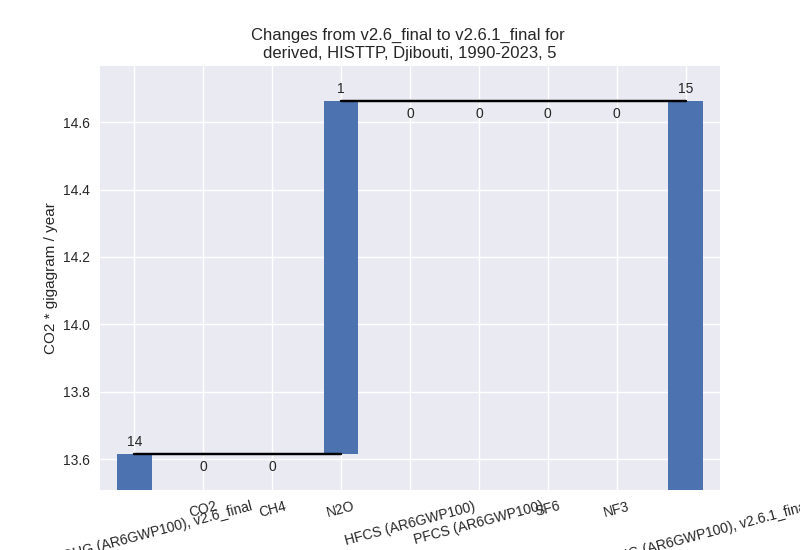Changes in PRIMAP-hist v2.6.1_final compared to v2.6_final for Djibouti
2025-03-19
Johannes Gütschow
Change analysis for Djibouti for PRIMAP-hist v2.6.1_final compared to v2.6_final
Overview over emissions by sector and gas
The following figures show the aggregate national total emissions excluding LULUCF AR6GWP100 for the country reported priority scenario. The dotted linesshow the v2.6_final data.
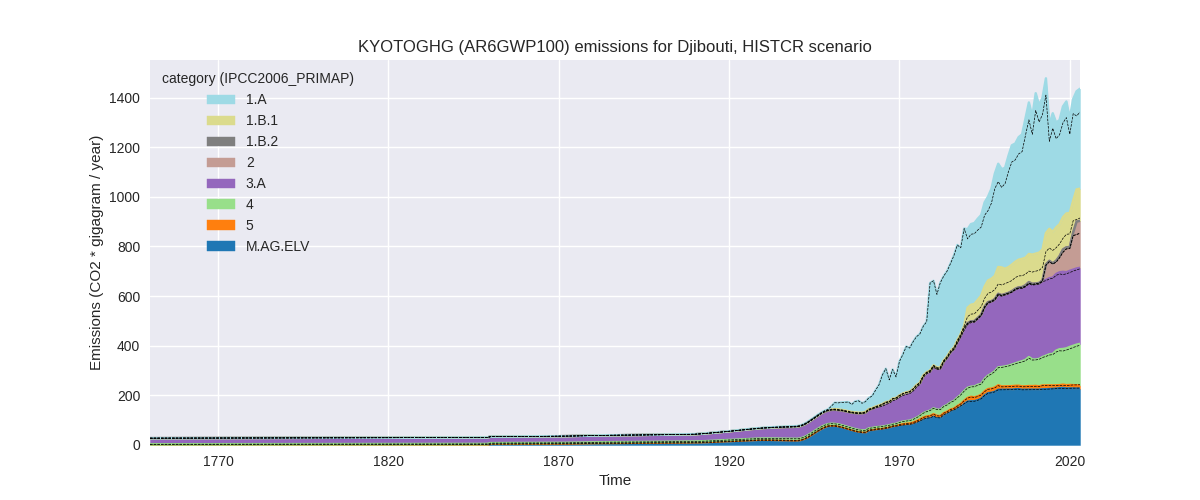
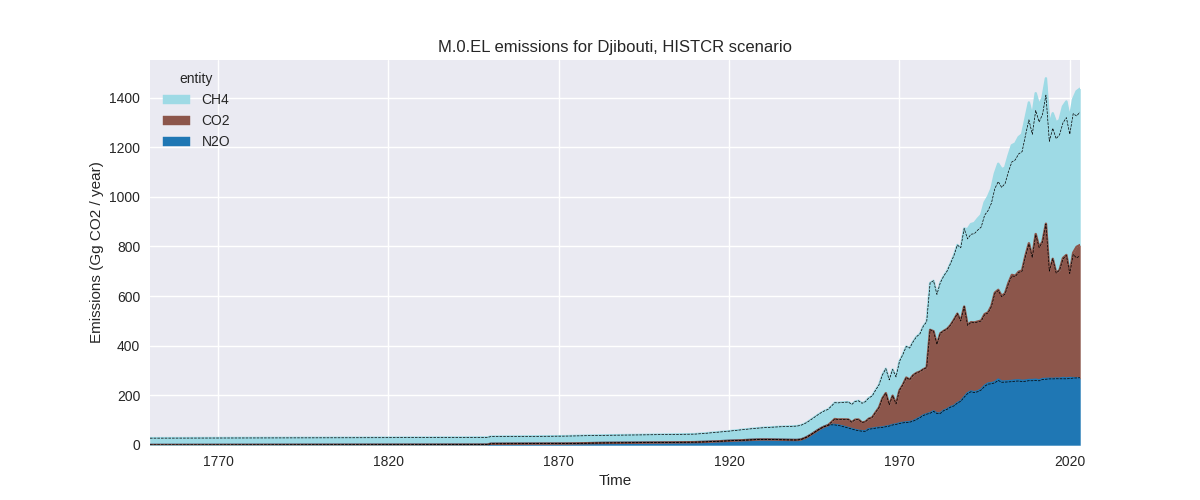
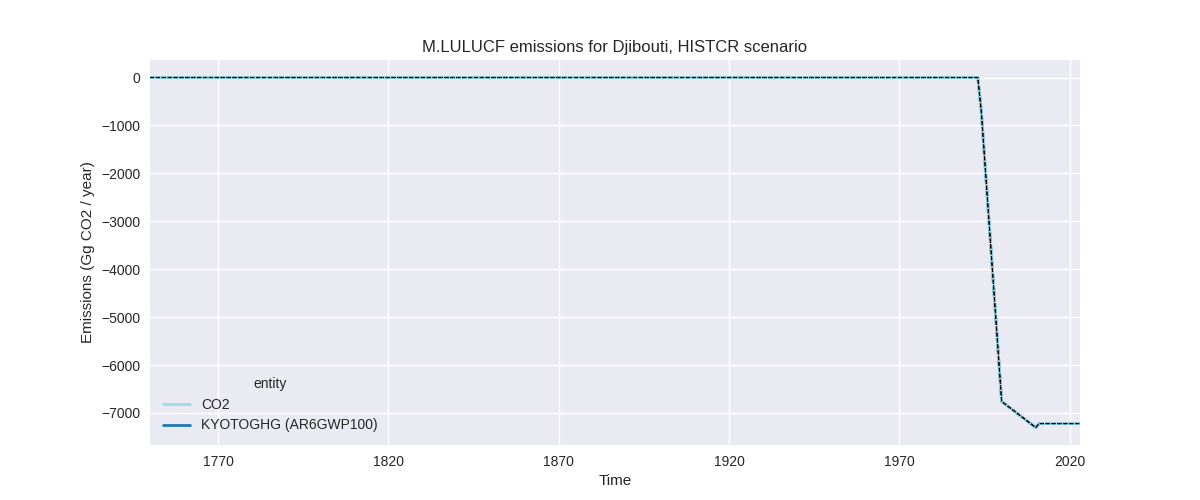
The following figures show the aggregate national total emissions excluding LULUCF AR6GWP100 for the third party priority scenario. The dotted linesshow the v2.6_final data.
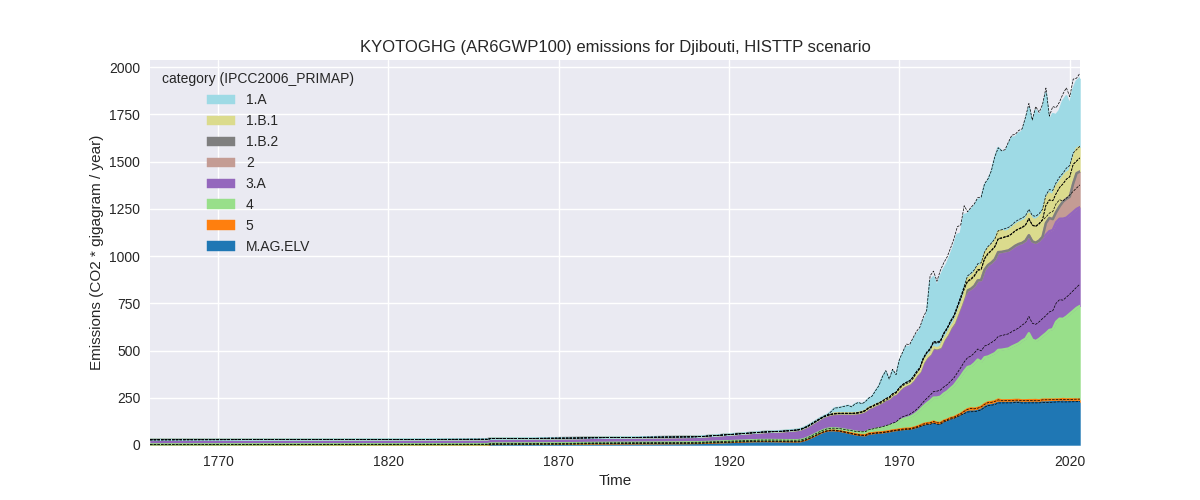
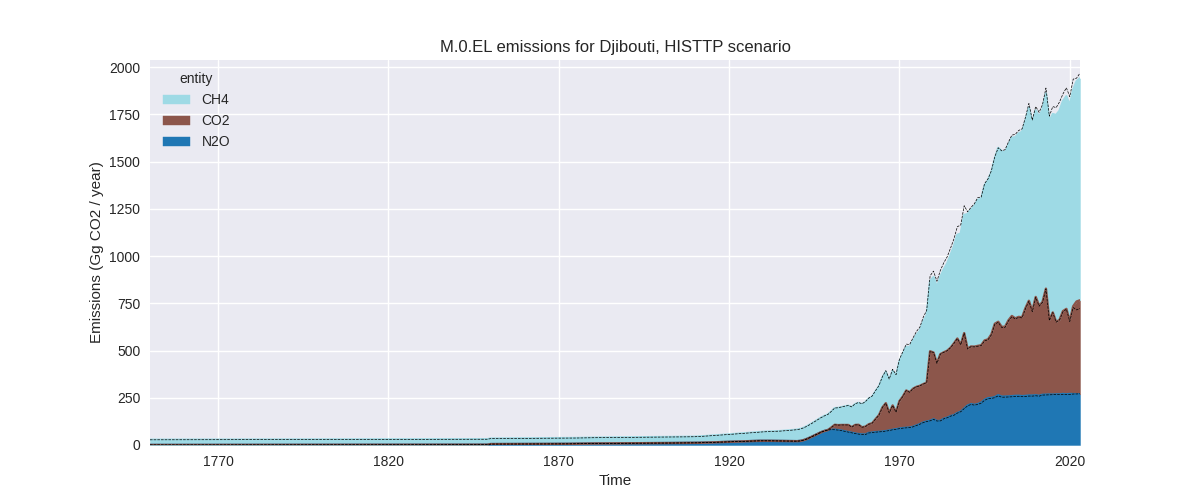
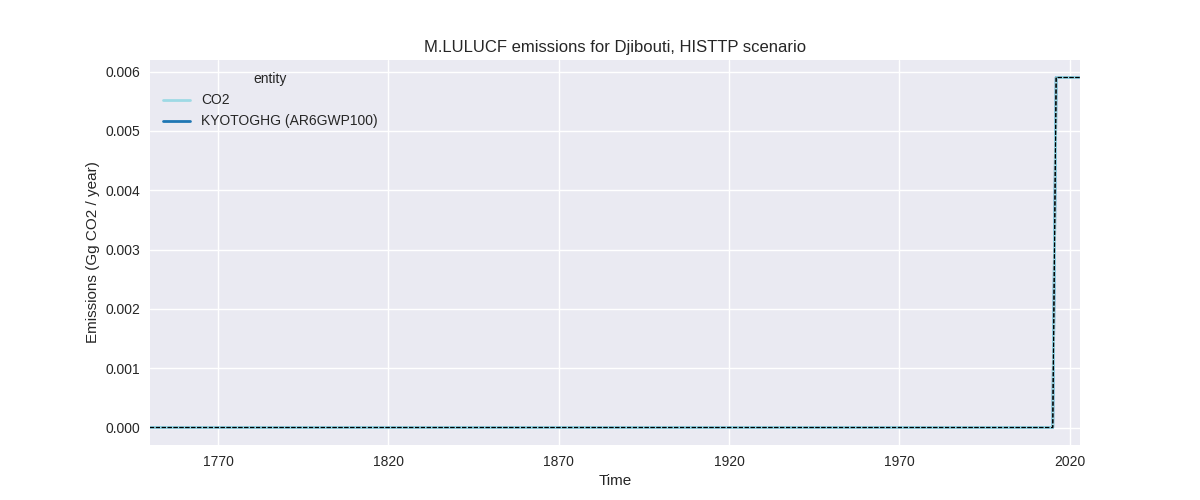
Overview over changes
In the country reported priority scenario we have the following changes for aggregate Kyoto GHG and national total emissions excluding LULUCF (M.0.EL):
- Emissions in 2023 have changed by 7.0%% (94.18 Gg CO2 / year)
- Emissions in 1990-2023 have changed by 5.5%% (63.68 Gg CO2 / year)
In the third party priority scenario we have the following changes for aggregate Kyoto GHG and national total emissions excluding LULUCF (M.0.EL):
- Emissions in 2023 have changed by -1.4%% (-27.70 Gg CO2 / year)
- Emissions in 1990-2023 have changed by -1.3%% (-21.87 Gg CO2 / year)
Most important changes per scenario and time frame
In the country reported priority scenario the following sector-gas combinations have the highest absolute impact on national total KyotoGHG (AR6GWP100) emissions in 2023 (top 5):
- 1: 1.B.1, CH4 with 66.98 Gg CO2 / year (109.9%)
- 2: 2, CO2 with 46.19 Gg CO2 / year (32.3%)
- 3: 1.A, CH4 with -22.14 Gg CO2 / year (-34.3%)
- 4: 4, CH4 with 7.46 Gg CO2 / year (5.1%)
- 5: M.AG.ELV, N2O with -2.86 Gg CO2 / year (-1.2%)
In the country reported priority scenario the following sector-gas combinations have the highest absolute impact on national total KyotoGHG (AR6GWP100) emissions in 1990-2023 (top 5):
- 1: 1.B.1, CH4 with 61.24 Gg CO2 / year (132.0%)
- 2: 1.A, CH4 with -4.19 Gg CO2 / year (-8.9%)
- 3: 2, CO2 with 2.93 Gg CO2 / year (9.1%)
- 4: 4, CH4 with 2.01 Gg CO2 / year (2.2%)
- 5: 5, N2O with 1.05 Gg CO2 / year (7.7%)
In the third party priority scenario the following sector-gas combinations have the highest absolute impact on national total KyotoGHG (AR6GWP100) emissions in 2023 (top 5):
- 1: 4, CH4 with -113.40 Gg CO2 / year (-19.0%)
- 2: 1.B.1, CH4 with 66.98 Gg CO2 / year (109.9%)
- 3: 2, CO2 with 46.19 Gg CO2 / year (32.3%)
- 4: 1.A, CH4 with -22.14 Gg CO2 / year (-34.3%)
- 5: M.AG.ELV, N2O with -2.86 Gg CO2 / year (-1.2%)
In the third party priority scenario the following sector-gas combinations have the highest absolute impact on national total KyotoGHG (AR6GWP100) emissions in 1990-2023 (top 5):
- 1: 4, CH4 with -83.51 Gg CO2 / year (-20.8%)
- 2: 1.B.1, CH4 with 61.24 Gg CO2 / year (132.0%)
- 3: 1.A, CH4 with -4.19 Gg CO2 / year (-8.9%)
- 4: 2, CO2 with 2.93 Gg CO2 / year (9.1%)
- 5: 5, N2O with 1.05 Gg CO2 / year (7.7%)
Notes on data changes
Here we list notes explaining important emissions changes for the country.
- No new country reported data has been included
- Higher cumulative and 2023 emissions (CR scenario) mainly due to a >100% increase in fugitive CH4 from solid fuels (1.B.1) in EDGAR data (no country reported data available for the sector).
- Emissions in the TP scenario are lower because the higher fugitive emissions are offset by much lower waste CH4 emissions (also from EDGAR)
Changes by sector and gas
For each scenario and time frame the changes are displayed for all individual sectors and all individual gases. In the sector plot we use aggregate Kyoto GHGs in AR6GWP100. In the gas plot we usenational total emissions without LULUCF.
country reported scenario
2023
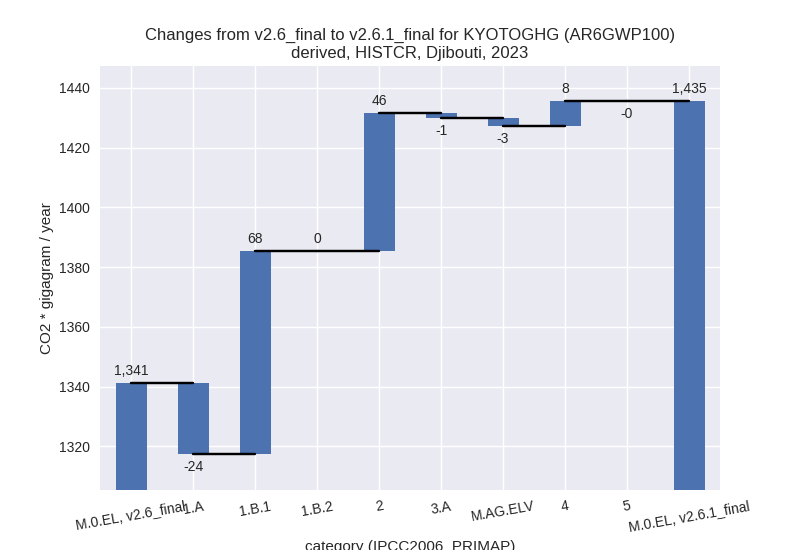
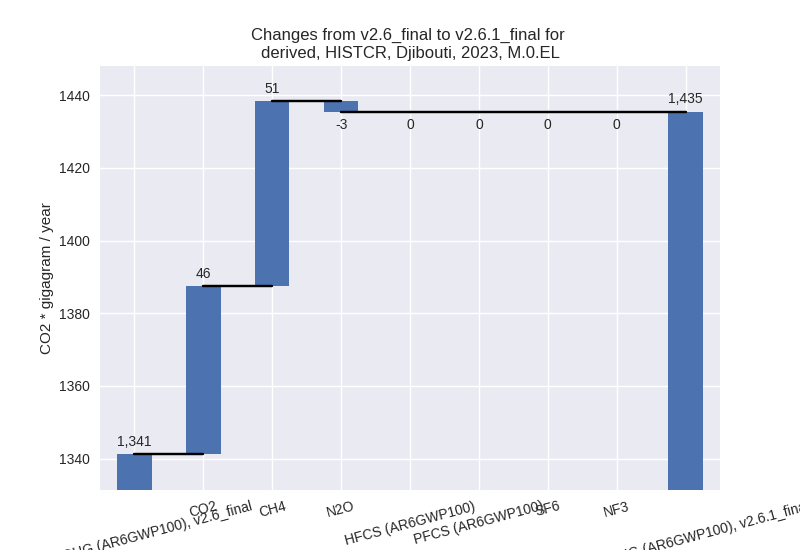
1990-2023
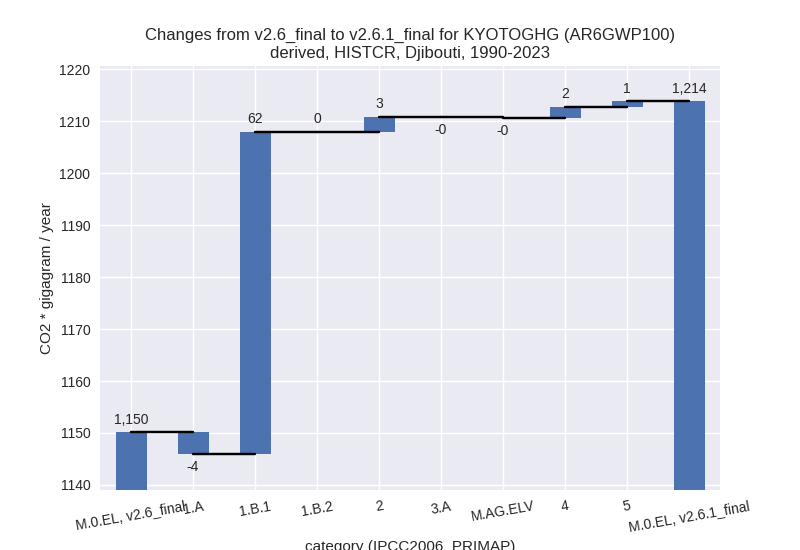
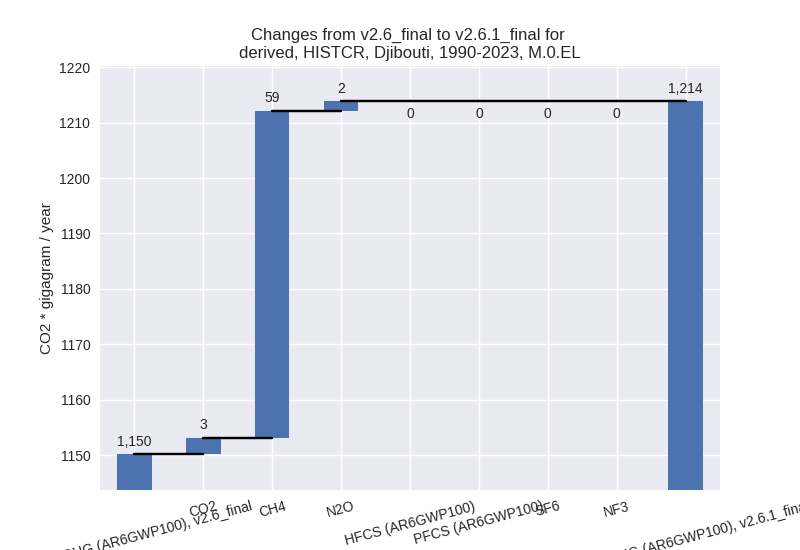
third party scenario
2023
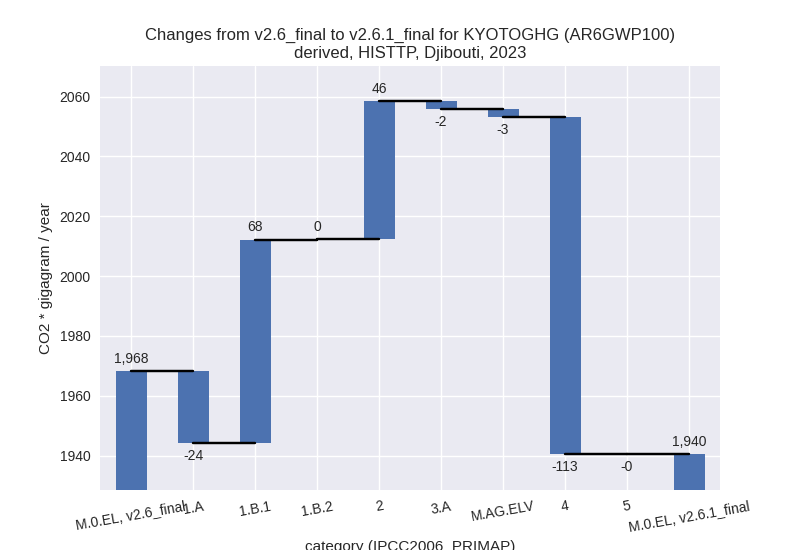
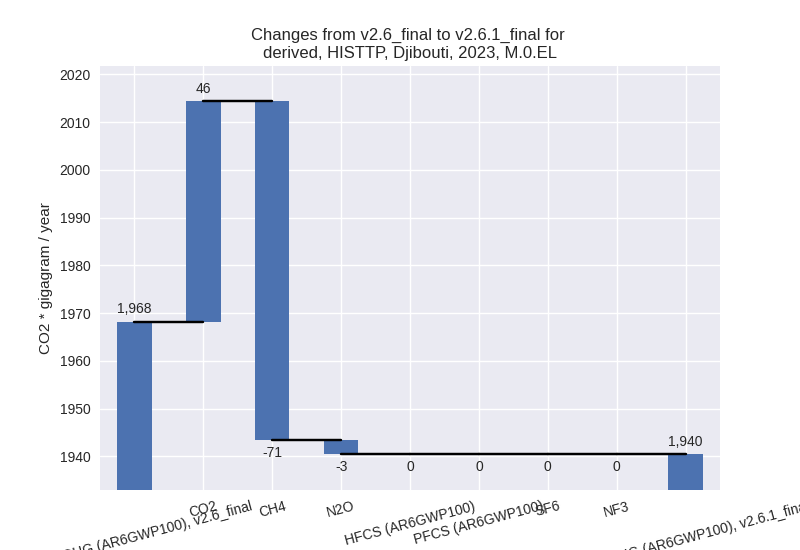
1990-2023
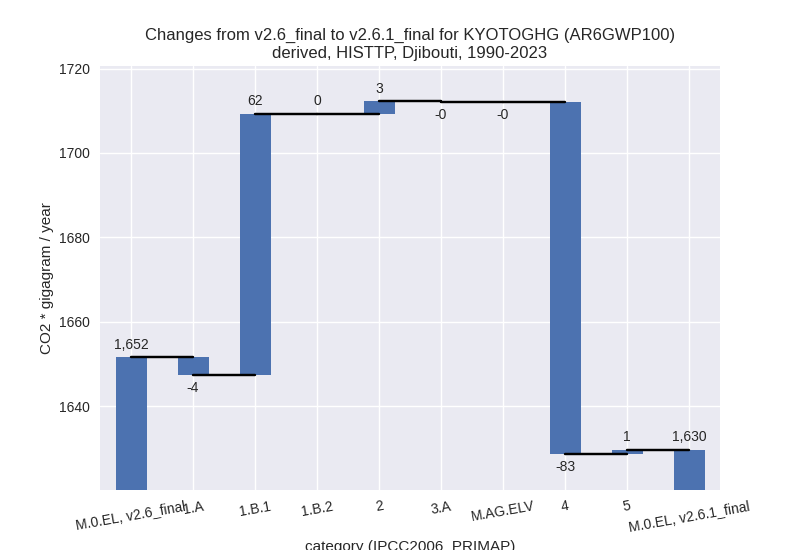
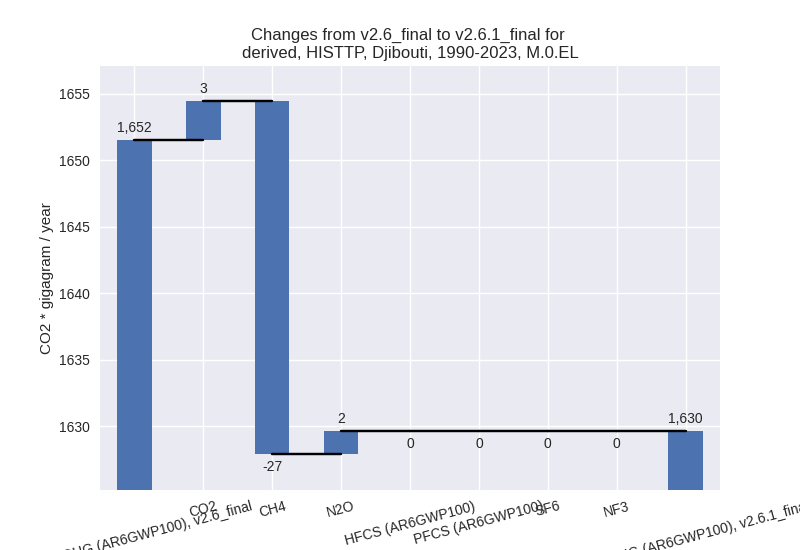
Detailed changes for the scenarios:
country reported scenario (HISTCR):
Most important changes per time frame
For 2023 the following sector-gas combinations have the highest absolute impact on national total KyotoGHG (AR6GWP100) emissions in 2023 (top 5):
- 1: 1.B.1, CH4 with 66.98 Gg CO2 / year (109.9%)
- 2: 2, CO2 with 46.19 Gg CO2 / year (32.3%)
- 3: 1.A, CH4 with -22.14 Gg CO2 / year (-34.3%)
- 4: 4, CH4 with 7.46 Gg CO2 / year (5.1%)
- 5: M.AG.ELV, N2O with -2.86 Gg CO2 / year (-1.2%)
For 1990-2023 the following sector-gas combinations have the highest absolute impact on national total KyotoGHG (AR6GWP100) emissions in 1990-2023 (top 5):
- 1: 1.B.1, CH4 with 61.24 Gg CO2 / year (132.0%)
- 2: 1.A, CH4 with -4.19 Gg CO2 / year (-8.9%)
- 3: 2, CO2 with 2.93 Gg CO2 / year (9.1%)
- 4: 4, CH4 with 2.01 Gg CO2 / year (2.2%)
- 5: 5, N2O with 1.05 Gg CO2 / year (7.7%)
Changes in the main sectors for aggregate KyotoGHG (AR6GWP100) are
- 1: Total sectoral emissions in 2022 are 524.81 Gg
CO2 / year which is 36.8% of M.0.EL emissions. 2023 Emissions have
changed by 9.0% (44.05 Gg CO2 /
year). 1990-2023 Emissions have changed by 11.7% (57.79 Gg CO2 / year). For 2023 the
changes per gas
are:
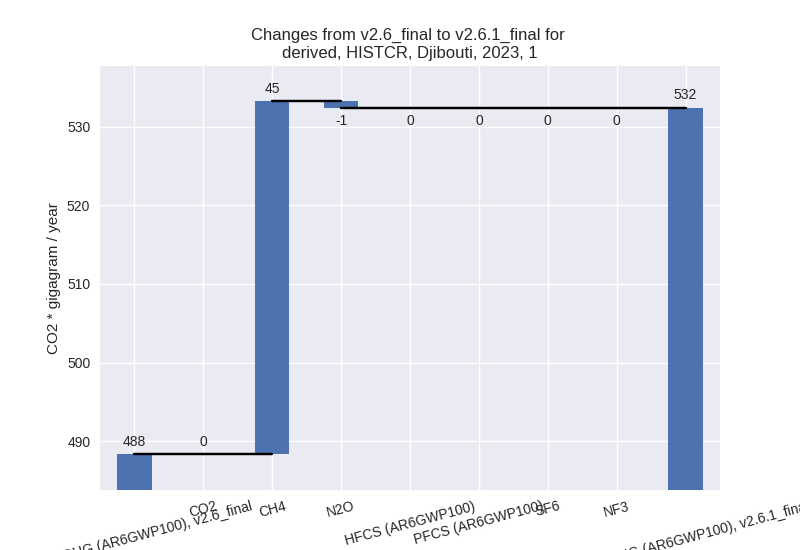
For 1990-2023 the changes per gas are: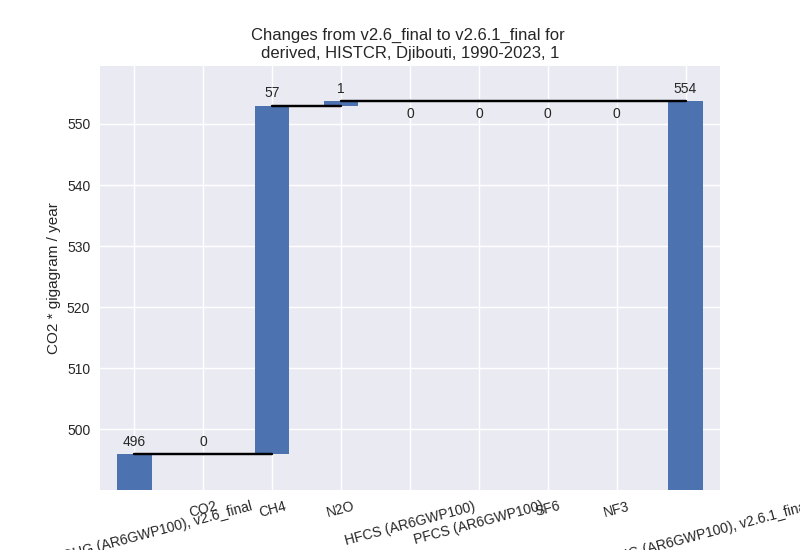
The changes come from the following subsectors:- 1.A: Total sectoral emissions in 2022 are 395.19 Gg
CO2 / year which is 75.3% of category 1 emissions. 2023 Emissions have
changed by -5.6% (-23.83 Gg CO2 /
year). 1990-2023 Emissions have changed by -1.0% (-4.27 Gg CO2 / year). For 2023 the
changes per gas
are:
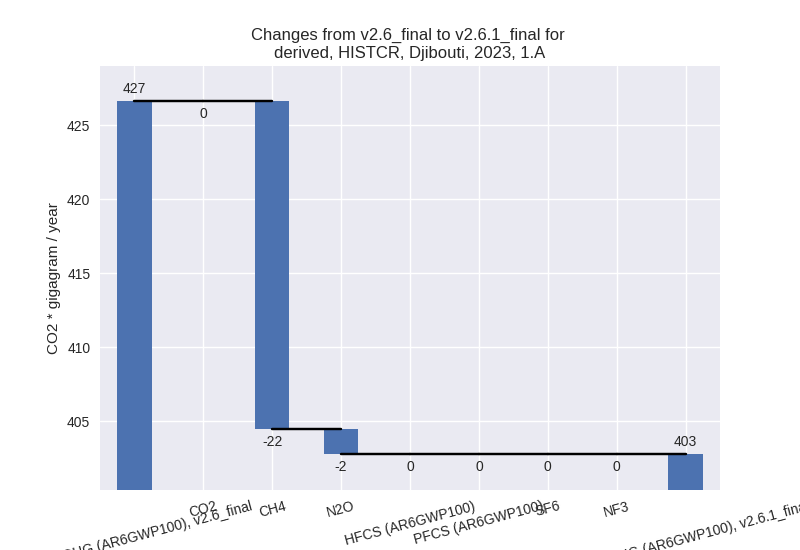
There is no subsector information available in PRIMAP-hist. - 1.B.1: Total sectoral emissions in 2022 are 129.61
Gg CO2 / year which is 24.7% of category 1 emissions. 2023 Emissions
have changed by 109.9% (67.87 Gg CO2
/ year). 1990-2023 Emissions have changed by 132.0% (62.05 Gg CO2 / year). For 2023 the
changes per gas
are:
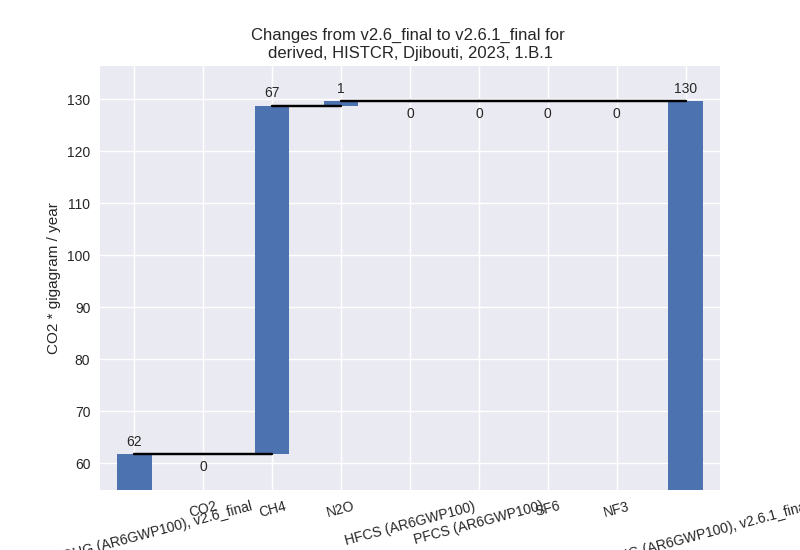
For 1990-2023 the changes per gas are: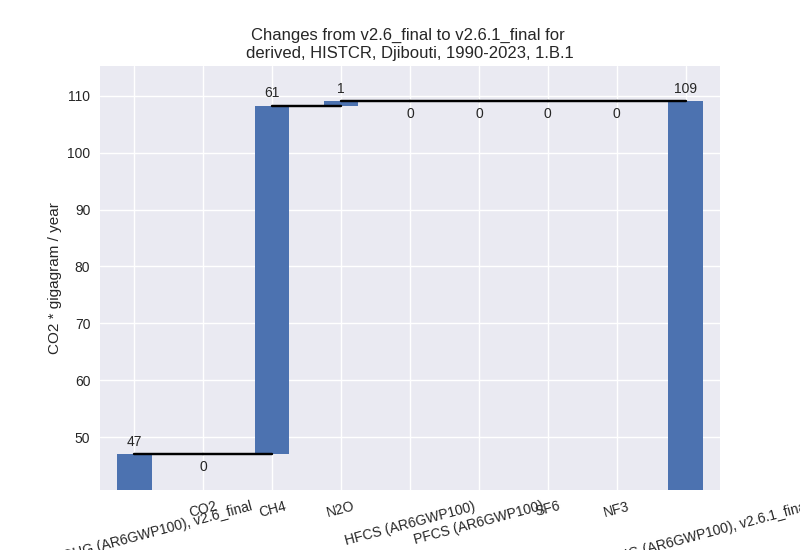
There is no subsector information available in PRIMAP-hist. - 1.B.2: Total sectoral emissions in 2022 are 0.01 Gg
CO2 / year which is 0.0% of category 1 emissions. 2023 Emissions have
changed by 398.1% (0.01 Gg CO2 /
year). 1990-2023 Emissions have changed by 101.3% (0.00 Gg CO2 / year). For 2023 the
changes per gas
are:
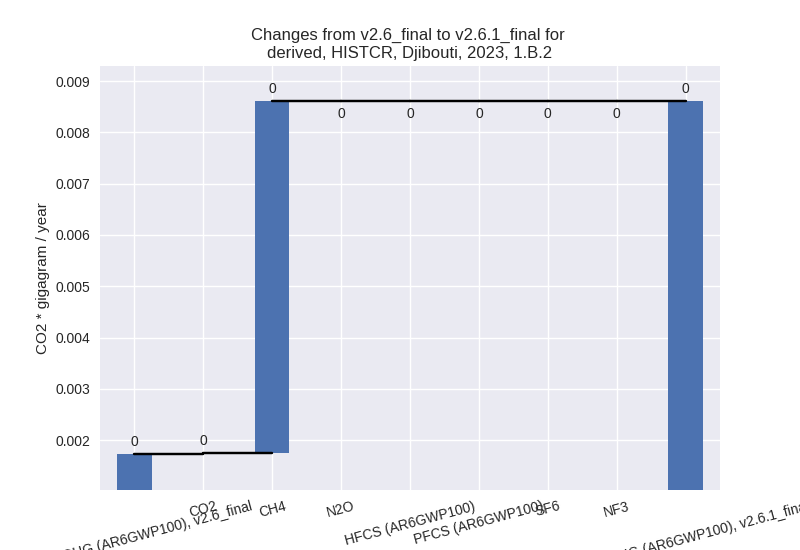
For 1990-2023 the changes per gas are: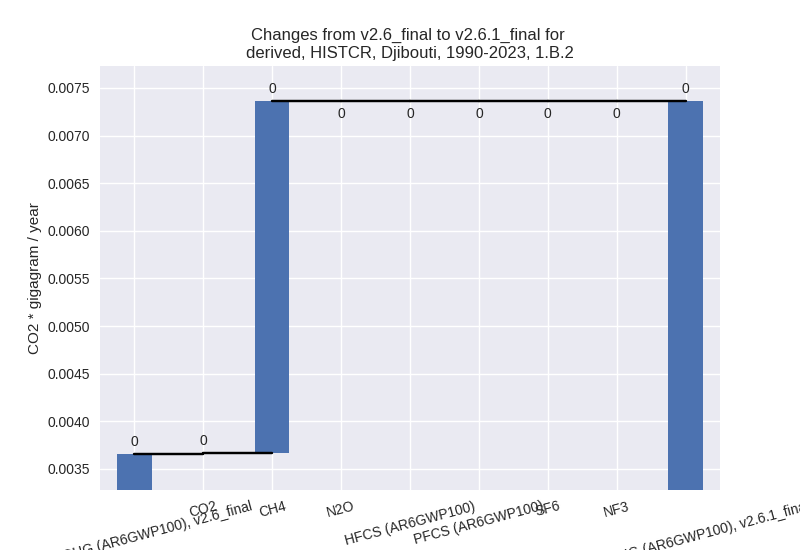
There is no subsector information available in PRIMAP-hist.
- 1.A: Total sectoral emissions in 2022 are 395.19 Gg
CO2 / year which is 75.3% of category 1 emissions. 2023 Emissions have
changed by -5.6% (-23.83 Gg CO2 /
year). 1990-2023 Emissions have changed by -1.0% (-4.27 Gg CO2 / year). For 2023 the
changes per gas
are:
- 2: Total sectoral emissions in 2022 are 189.01 Gg
CO2 / year which is 13.3% of M.0.EL emissions. 2023 Emissions have
changed by 32.3% (46.19 Gg CO2 /
year). 1990-2023 Emissions have changed by 9.1% (2.93 Gg CO2 / year). For 2023 the
changes per gas
are:
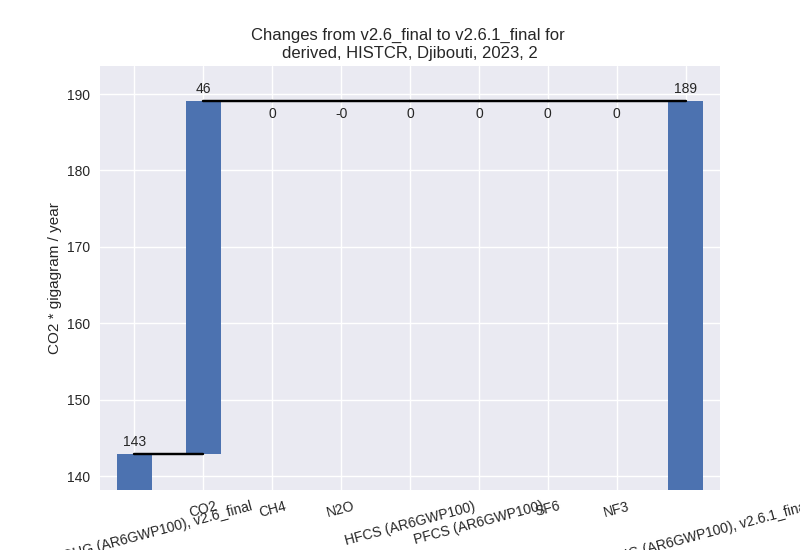
For 1990-2023 the changes per gas are: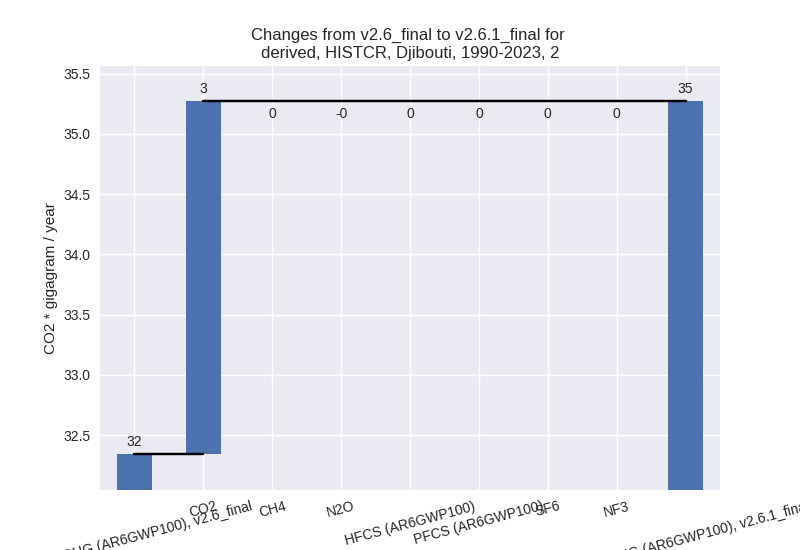
- M.AG: Total sectoral emissions in 2022 are 534.14 Gg CO2 / year which is 37.5% of M.0.EL emissions. 2023 Emissions have changed by -0.8% (-4.33 Gg CO2 / year). 1990-2023 Emissions have changed by -0.0% (-0.19 Gg CO2 / year).
- 4: Total sectoral emissions in 2022 are 164.01 Gg
CO2 / year which is 11.5% of M.0.EL emissions. 2023 Emissions have
changed by 5.2% (8.32 Gg CO2 /
year). 1990-2023 Emissions have changed by 2.2% (2.10 Gg CO2 / year). For 2023 the
changes per gas
are:
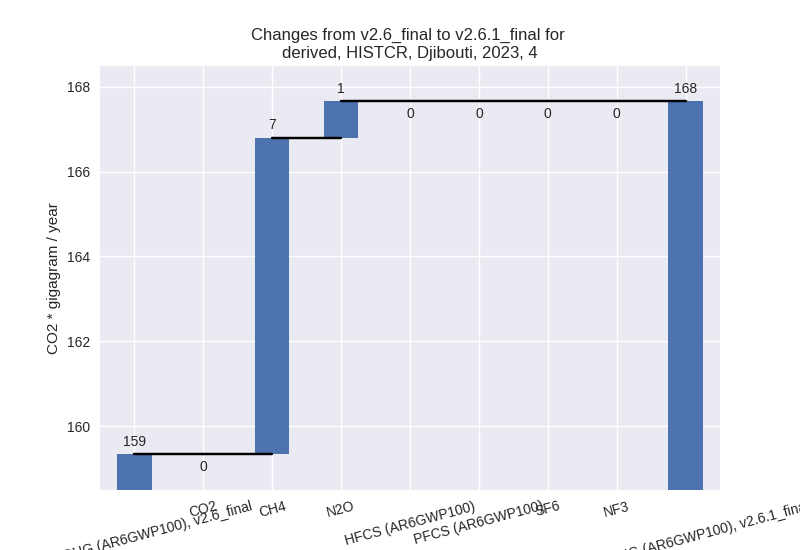
For 1990-2023 the changes per gas are: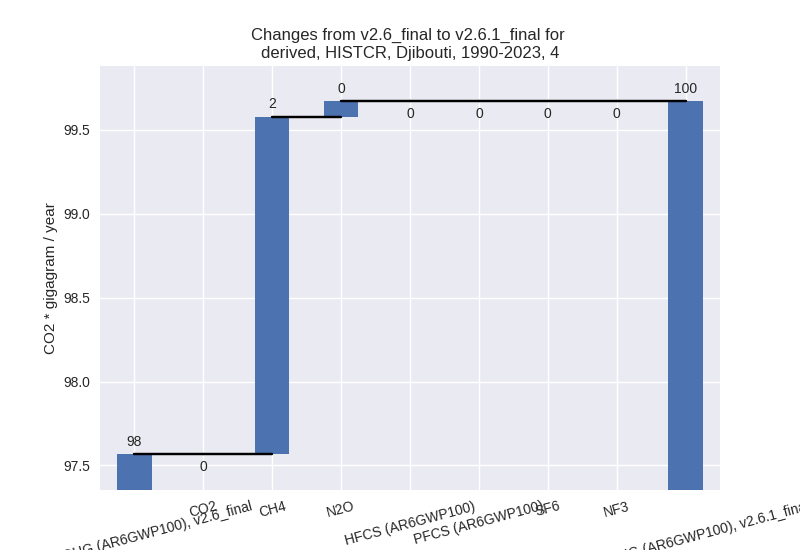
- 5: Total sectoral emissions in 2022 are 13.14 Gg
CO2 / year which is 0.9% of M.0.EL emissions. 2023 Emissions have
changed by -0.3% (-0.05 Gg CO2 /
year). 1990-2023 Emissions have changed by 7.7% (1.05 Gg CO2 / year). For 1990-2023
the changes per gas
are:
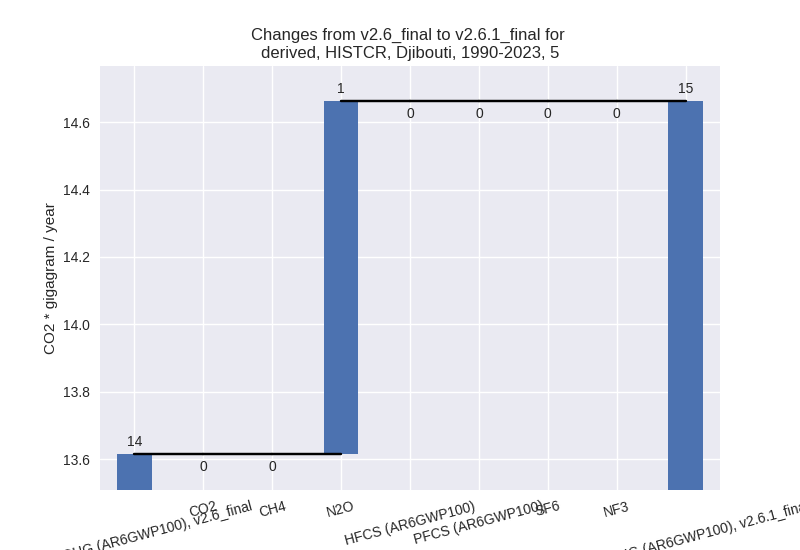
third party scenario (HISTTP):
Most important changes per time frame
For 2023 the following sector-gas combinations have the highest absolute impact on national total KyotoGHG (AR6GWP100) emissions in 2023 (top 5):
- 1: 4, CH4 with -113.40 Gg CO2 / year (-19.0%)
- 2: 1.B.1, CH4 with 66.98 Gg CO2 / year (109.9%)
- 3: 2, CO2 with 46.19 Gg CO2 / year (32.3%)
- 4: 1.A, CH4 with -22.14 Gg CO2 / year (-34.3%)
- 5: M.AG.ELV, N2O with -2.86 Gg CO2 / year (-1.2%)
For 1990-2023 the following sector-gas combinations have the highest absolute impact on national total KyotoGHG (AR6GWP100) emissions in 1990-2023 (top 5):
- 1: 4, CH4 with -83.51 Gg CO2 / year (-20.8%)
- 2: 1.B.1, CH4 with 61.24 Gg CO2 / year (132.0%)
- 3: 1.A, CH4 with -4.19 Gg CO2 / year (-8.9%)
- 4: 2, CO2 with 2.93 Gg CO2 / year (9.1%)
- 5: 5, N2O with 1.05 Gg CO2 / year (7.7%)
Changes in the main sectors for aggregate KyotoGHG (AR6GWP100) are
- 1: Total sectoral emissions in 2022 are 485.96 Gg
CO2 / year which is 25.3% of M.0.EL emissions. 2023 Emissions have
changed by 9.8% (44.05 Gg CO2 /
year). 1990-2023 Emissions have changed by 12.1% (57.79 Gg CO2 / year). For 2023 the
changes per gas
are:
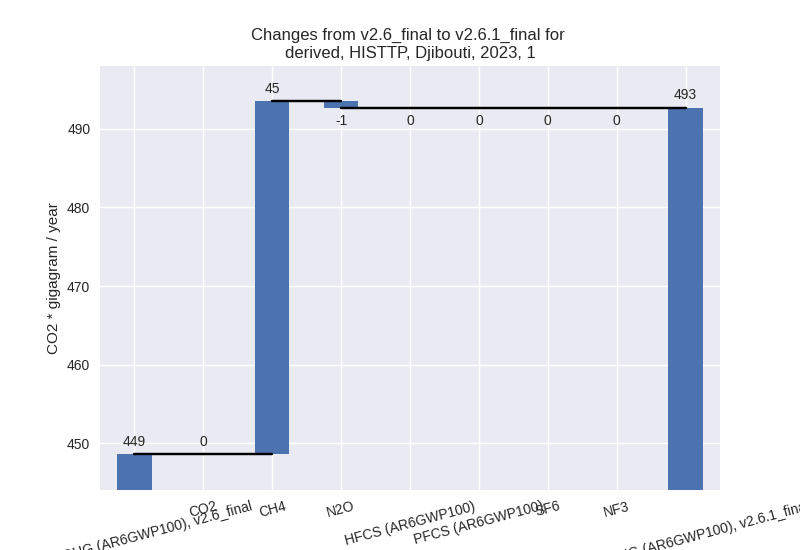
For 1990-2023 the changes per gas are: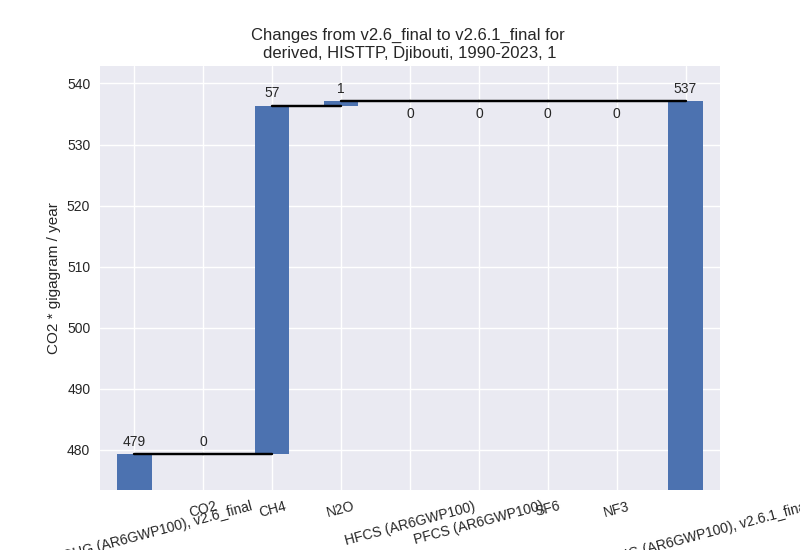
The changes come from the following subsectors:- 1.A: Total sectoral emissions in 2022 are 356.34 Gg
CO2 / year which is 73.3% of category 1 emissions. 2023 Emissions have
changed by -6.2% (-23.83 Gg CO2 /
year). 1990-2023 Emissions have changed by -1.0% (-4.27 Gg CO2 / year). For 2023 the
changes per gas
are:
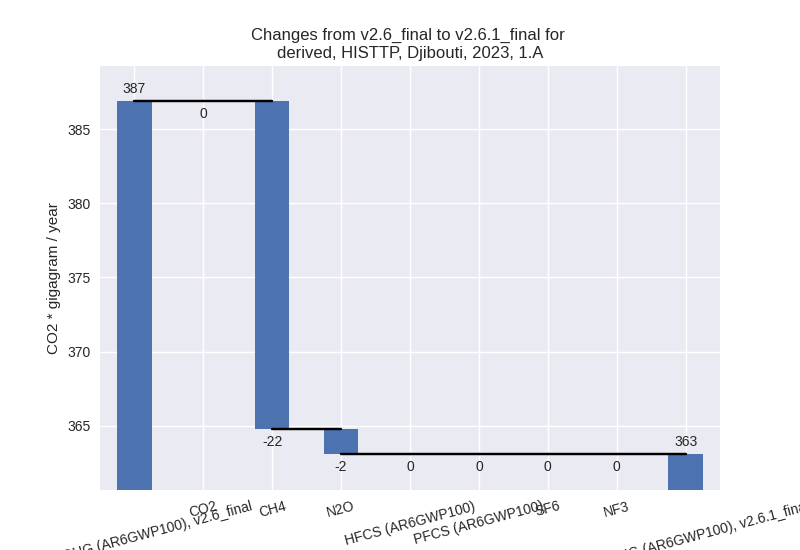
There is no subsector information available in PRIMAP-hist. - 1.B.1: Total sectoral emissions in 2022 are 129.61
Gg CO2 / year which is 26.7% of category 1 emissions. 2023 Emissions
have changed by 109.9% (67.87 Gg CO2
/ year). 1990-2023 Emissions have changed by 132.0% (62.05 Gg CO2 / year). For 2023 the
changes per gas
are:
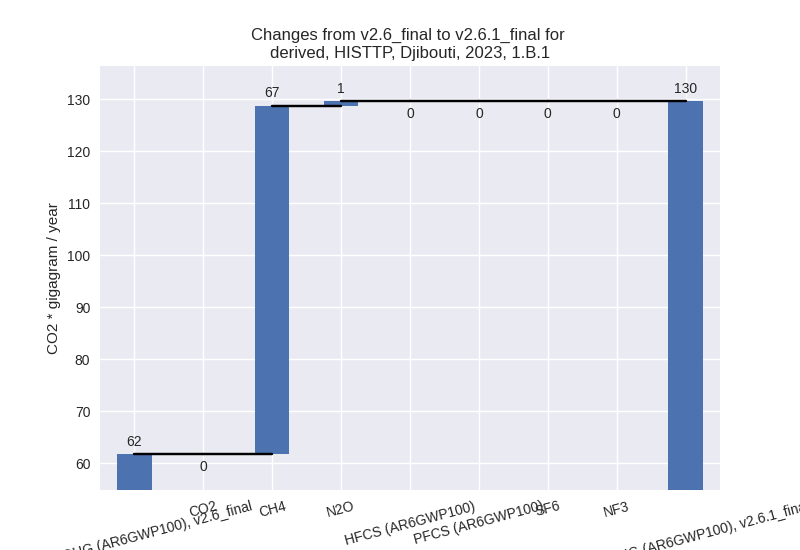
For 1990-2023 the changes per gas are: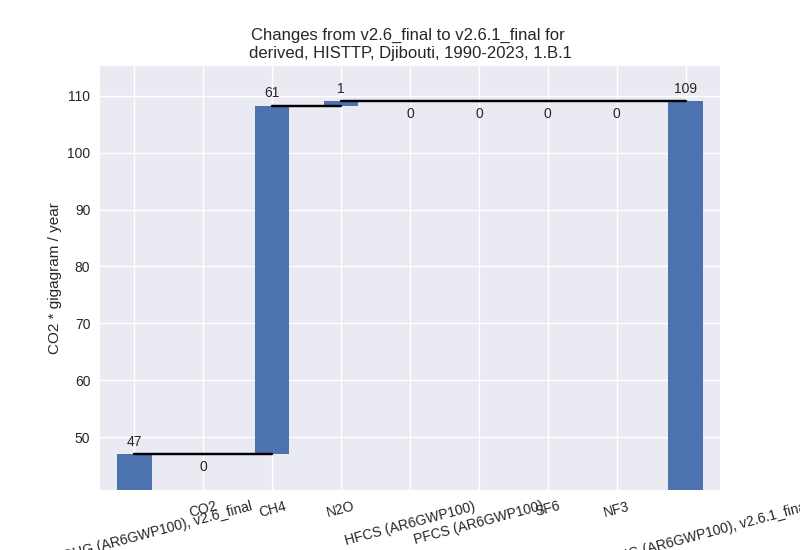
There is no subsector information available in PRIMAP-hist. - 1.B.2: Total sectoral emissions in 2022 are 0.01 Gg
CO2 / year which is 0.0% of category 1 emissions. 2023 Emissions have
changed by 398.1% (0.01 Gg CO2 /
year). 1990-2023 Emissions have changed by 101.3% (0.00 Gg CO2 / year). For 2023 the
changes per gas
are:
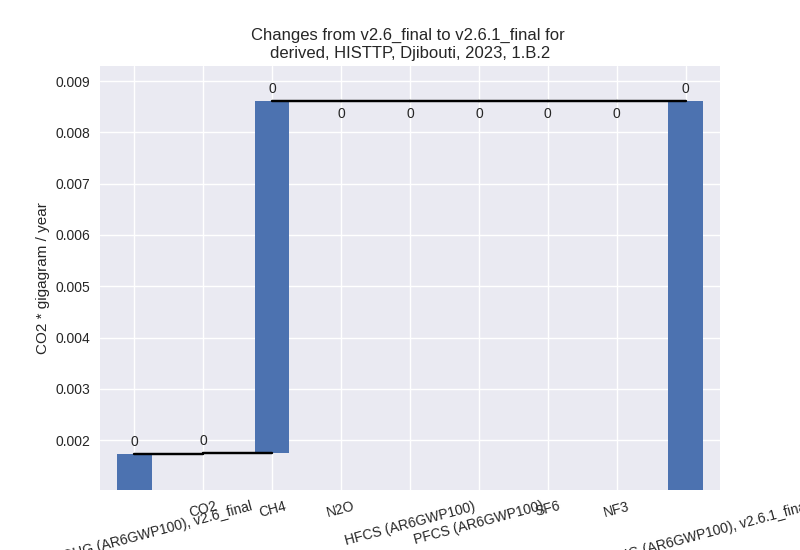
For 1990-2023 the changes per gas are: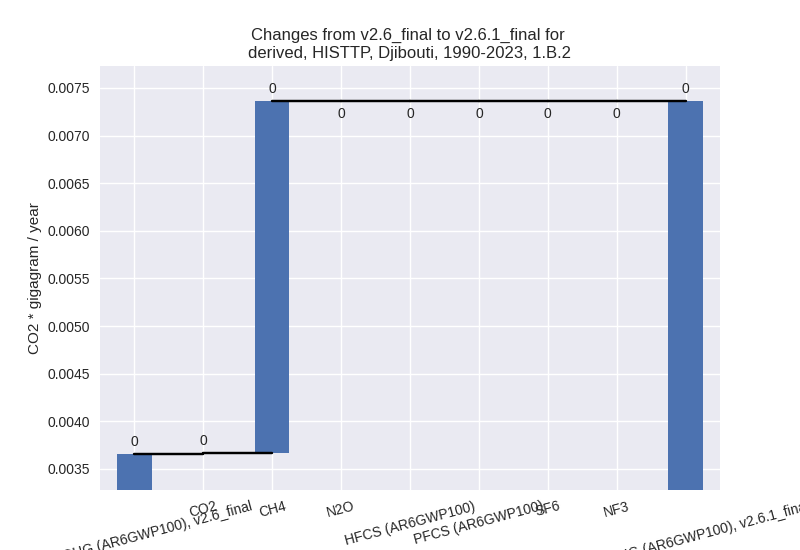
There is no subsector information available in PRIMAP-hist.
- 1.A: Total sectoral emissions in 2022 are 356.34 Gg
CO2 / year which is 73.3% of category 1 emissions. 2023 Emissions have
changed by -6.2% (-23.83 Gg CO2 /
year). 1990-2023 Emissions have changed by -1.0% (-4.27 Gg CO2 / year). For 2023 the
changes per gas
are:
- 2: Total sectoral emissions in 2022 are 189.01 Gg
CO2 / year which is 9.8% of M.0.EL emissions. 2023 Emissions have
changed by 32.3% (46.19 Gg CO2 /
year). 1990-2023 Emissions have changed by 9.1% (2.93 Gg CO2 / year). For 2023 the
changes per gas
are:
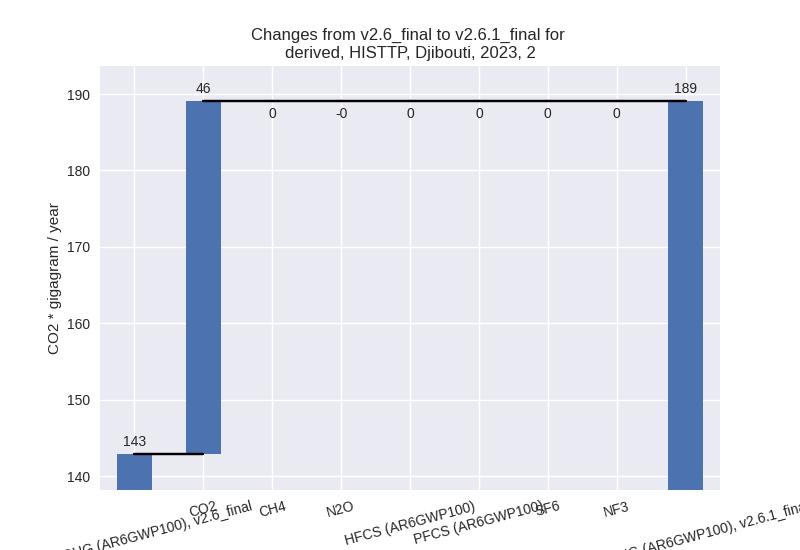
For 1990-2023 the changes per gas are: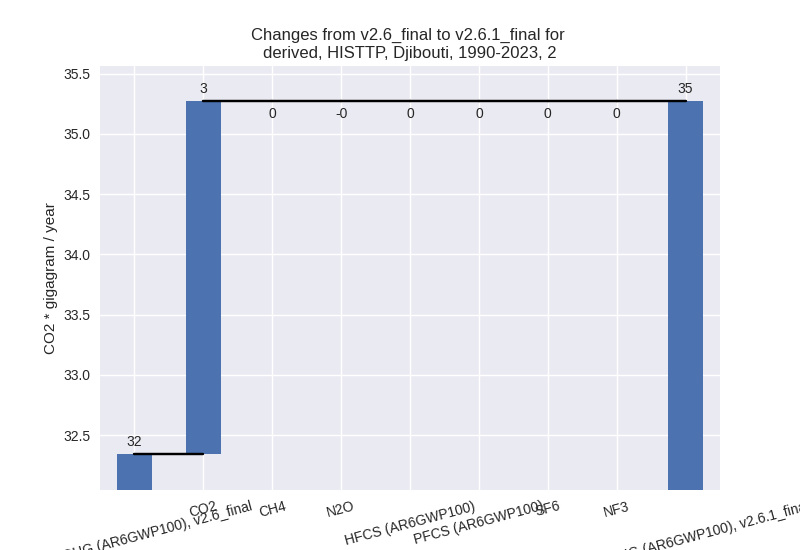
- M.AG: Total sectoral emissions in 2022 are 750.89 Gg CO2 / year which is 39.0% of M.0.EL emissions. 2023 Emissions have changed by -0.7% (-5.35 Gg CO2 / year). 1990-2023 Emissions have changed by -0.0% (-0.22 Gg CO2 / year).
- 4: Total sectoral emissions in 2022 are 485.11 Gg
CO2 / year which is 25.2% of M.0.EL emissions. 2023 Emissions have
changed by -18.5% (-112.54 Gg CO2 /
year). 1990-2023 Emissions have changed by -20.3% (-83.42 Gg CO2 / year). For 2023
the changes per gas
are:
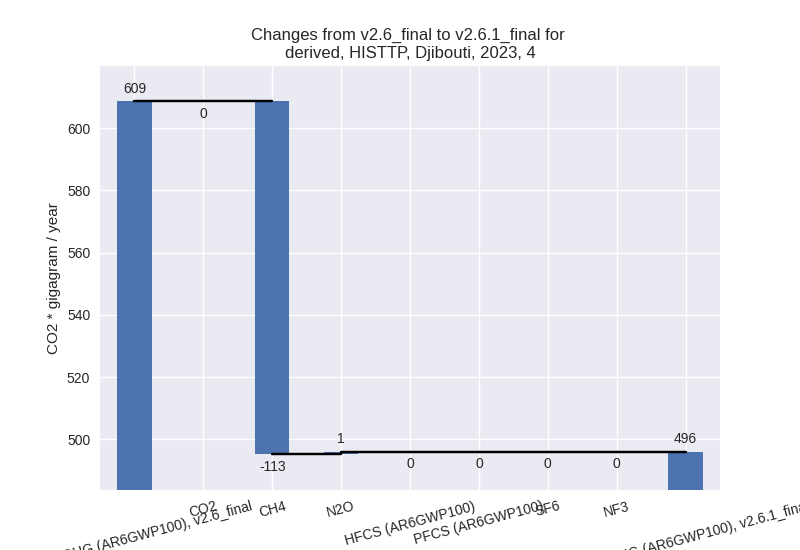
For 1990-2023 the changes per gas are: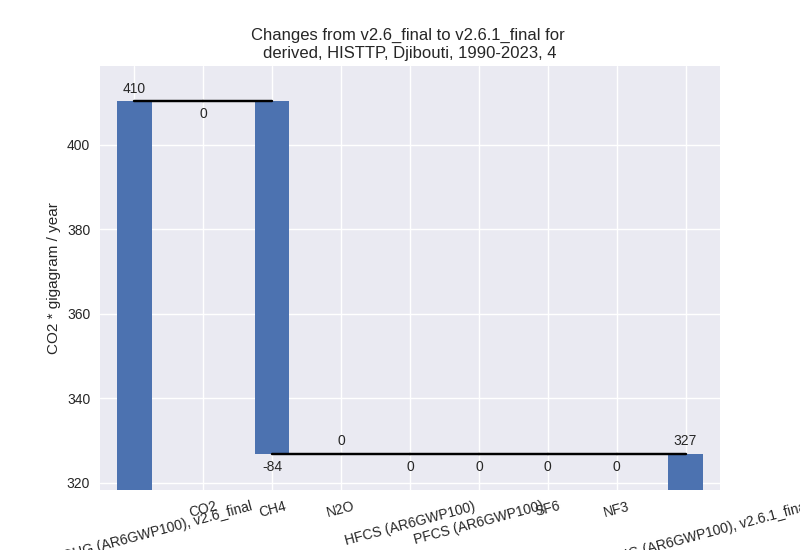
- 5: Total sectoral emissions in 2022 are 13.14 Gg
CO2 / year which is 0.7% of M.0.EL emissions. 2023 Emissions have
changed by -0.3% (-0.05 Gg CO2 /
year). 1990-2023 Emissions have changed by 7.7% (1.05 Gg CO2 / year). For 1990-2023
the changes per gas
are:
